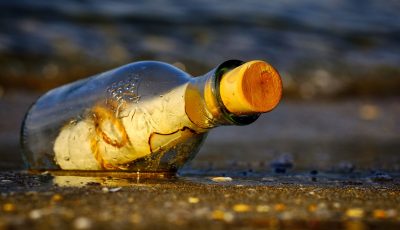RICK’S COLUMN
The Navy and submarines
The Mariana Islands, our collective home, is in an area of the Western Pacific that holds immense symbolic and geopolitical importance to some of the world’s most powerful countries. The Marianas chain is west of the International Dateline, north of the equator with Guam containing major sources of freshwater, plateaus used by the Air Force for ongoing flight operations, and the region’s largest natural harbor used by the Navy at Sumay village.
Chinese submarines
The Chinese Navy has been improving and updating its total inventory of warfighting resources for the purposes of not only becoming the strongest Navy in its near seas’ region, but also to directly challenge and effectively overcome countermeasures undertaken in part by the American military based out of the Marianas.
The significance of China’s rise militarily is that it intends to surpass American armed forces sea power, and to defeat and neutralize any operational response that the U.S. Navy might deliver should China seek to attack Taiwan. China currently has more submarines in operation in our region than the United States and, as current trends develop, the Chinese military wants to be able to use torpedoes, mines, and other undersea weapons to sink American submarines and surface ships.
Unlike the United States, most of China’s submarines are not powered by nuclear reactors, yet China remains on course to further modernize and replace aging submarines while improving existing capabilities with its limited number of nuclear-powered submarines that carry long range missiles containing nuclear warheads.
The result is that the United States must continue to remain prepared to respond to a host of contingencies in the nearby undersea space. America, like China, is also engaged in a massive submarine construction and modernization program.
Russian submarines
Russia has nuclear-powered submarines able to fire medium and long-range missiles carrying nuclear warheads and operates an inventory of diesel electric-powered attack submarines.
The Russian government continues to express and assign high priority toward ensuring that its inventory of submarines provides an effective nuclear weapons deterrent, as a defensive versus offensive capability.
Russia has its own Pacific Fleet that falls under what is referred to as the Eastern Russian Federation Military District. The Russian Navy is responsible worldwide for up to 1,000 nuclear weapons identified for nonstrategic use. It is not known with precision how many of these weapons exist and how many are specifically assigned to the Pacific Fleet. Because Russia views the Pacific with growing importance, we should expect to see Russia continuing to beef up its nonstrategic nuclear weapons’ operational capabilities in the Blue Ocean continent over the next several years.
How Guam and the Northern Mariana Islands generally interface with submarine warfare
The move to increase the total number of fast attack submarines homeported at Sumay reflects the broader effort undertaken by the American Navy to forward station and test additional key assets as well as place the best and most highly trained operational personnel in the Pacific Ocean area.
The intent of these actions is to deter China from permanently accessing and establishing a large military presence in the Western Pacific region.
For better and for worse, our island chain also remains a central and key location used by the United States military for testing different ways to constitute, employ, and deploy existing military forces and weapons. Submarines remain the essential contributing assets that help fulfill undersea military responsibilities.
One way that our Chamorro Pacific Islander civilization can think about this onslaught of American militarization in Guam and the Northern Marianas and the use of U.S. submarines is that these deadly weapons of war are used to project force in a variety of ways that include patrolling the deep and shallow undersea areas, supporting special operations missions, and maintaining the ability to launch missiles carrying nuclear warheads while remaining largely undetected.
Submarines homeported in Guam also engage in a variety of surveillance and reconnaissance mission sets that are required to sustain an overall sense of what’s taking place in the undersea environment. Our ancient village of Sumay is used by the Navy to provide ongoing assistance and support to ensure that America’s ballistic missile submarines, which constitutes the sea-based leg of the United States nuclear weapons triad, can carry out its assigned mission.
As Pacific islanders of Chamorro ancestry, we have the incentive to learn how submarines engage in underwater target practice, live fire and sinking exercises using its available weaponry. We have the incentive to understand how use of active sonar and large underwater explosives by submarines can disturb, injure, and kill our rare marine mammals.
Guam’s need for a hardened infrastructure
Our people should be concerned with why Guam is not 100% protected from an incoming Chinese or Russian cruise missile attack aimed at Sumay or Ritidian. We should be asking why villagers do not have a bill in Congress to support the construction of a comprehensive nuclear bomb shelter infrastructure for Guam’s villager population.
We should be concerned about how Russia, the United States and China are focusing more and more on the design and use of unmanned undersea vehicles powered by nuclear energy, able to carry tactical nuclear weapons at speeds that were previously unheard of.
We should also wonder why the U.S. and China do not have bilateral arrangements to make port calls and why more efforts are not being taken by America to partner with China to offset Russia’s interest in growing its overall ability to project force using submarines powered by nuclear reactors carrying nuclear weapons aimed at Guam.



























